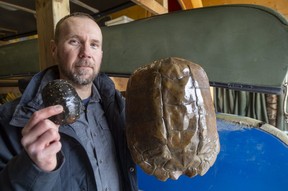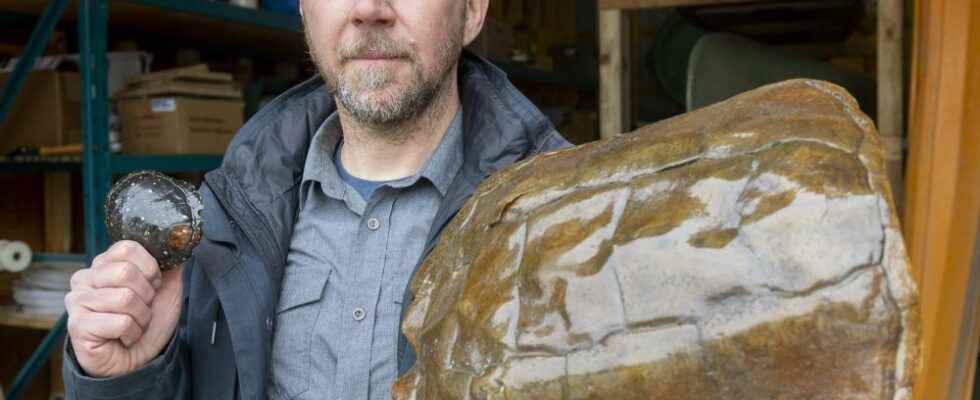Southern Ontario’s vulnerable turtles and snakes need your help.

Southern Ontario’s vulnerable turtles and snakes need your help.
This advertisement has not loaded yet, but your article continues below.
The head of one of Canada’s longest-running conservation programs is asking for the public’s financial support after the provincial government cut its funding for the first time in nearly 15 years.
“Since 2007, we’ve been able to get species-at-risk funding from the provincial government. This year, despite having our likely best proposal and hitting all the priorities and goals, we were told we were not funded,” said Scott Gillingwater, a species-at-risk biologist with the Upper Thames River Conversation Authority.
Gillingwater, who’s worked in conservation for 29 years, said he and his team learned the Southern Ontario At Risk Reptiles (SOARR) program wouldn’t receive the three-year provincial grant nine months after submitting their application.
“The lack of funding is a very serious issue for grassroots programs such as this,” he said. “We use every cent to impact the species that we work with, and if we have a funding deficit, it can cause a crippling effect for the work we do.”
Gillingwater said there are many unanswered questions as to why he and his team didn’t receive provincial funding, which typically accounts for 36 per cent of the program’s overall financial support, with other streams coming from the federal government and foundations.
That’s why the program has set a goal of raising $50,000.
The money has helped sustain the program’s research and wildlife recovery efforts since 2007. The program was founded in 1994 when Gillingwater was hired for a summer job to conduct recovery work for endangered spiny soft-shell turtles.
This advertisement has not loaded yet, but your article continues below.
“It was the first time anyone had hired on two staff to do this work, and myself and the other individual decided that this should keep going,” he said. “We applied for funding, and the rest is history.”

What began as a summer gig quickly grew into a conservation program now recognized for its innovation locally, provincially and nationally.
In the years that followed, Gillingwater and his team expanded SOAAR to monitor and restore seven kinds of turtles and six kinds of snakes, including the eastern hognose snake, the snapping turtle and the musk turtle.
The recovery work is multi-tiered. It begins with community input to identify where the at-risk species live in the region. Once found, the SOARR team conducts a health assessment and inserts a microchip, “just like you would for a dog or cat,” to track the animal throughout its life, Gillingwater said.
Another critical part of SOARR’s work is looking at the threats to the reptiles and their ecosystems, including the toll humans have on their environments, such as pollution and flooding.
These steps then pave the way for recovery efforts. “We salvage eggs from nests that are going to be lost, we incubate them in our lab, and we release the many thousands of young hatchling turtles back into the wild each year,” Gillingwater said.
Last year, the conservation authority released more than 5,000 hatchling turtles back into the wild from its egg incubation program and marked roughly 300 adult animals of various species in the field.
This advertisement has not loaded yet, but your article continues below.
“Each year is a little bit different, but we’ve always been extremely successful. . . . It’s the passion and the effort that we put into it. We generally don’t take no for an answer. We’d get in there and do the work.”
When Gillingwater and his team of roughly four people — around eight in the summer — aren’t getting their feet and hands dirty in the field, they spend time each year educating thousands of local residents about their work and the importance of these rare species.
On a biological level, these species are critical to birds and other reptiles in the environment, Gillingwater said, adding they’re also indicators of ongoing environmental issues, like climate change.
On a human level, “if you think about what we grew up seeing when we were kids, some of those species might not be there for our grandkids.”
The work doesn’t exist in isolation, which is why Gillingwater is asking for the public’s help to ensure his program survives.
“It is the community that’s helped us raise awareness,” he said. “And now I hope that it’s the community that will allow us to continue.”
HOW TO DONATE
What: Southern Ontario At Risk Reptiles (SOARR) fundraising goal of $50,000
Where: Support the program with a tax-deductible donation at www.thamesriverdonations.ca/species-at-risk
The Local Journalism Initiative is funded by the Government of Canada
